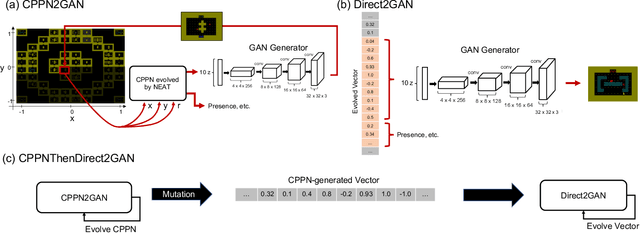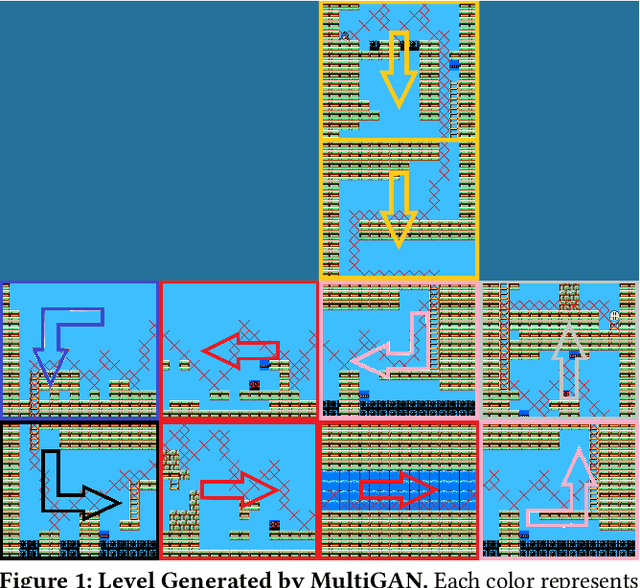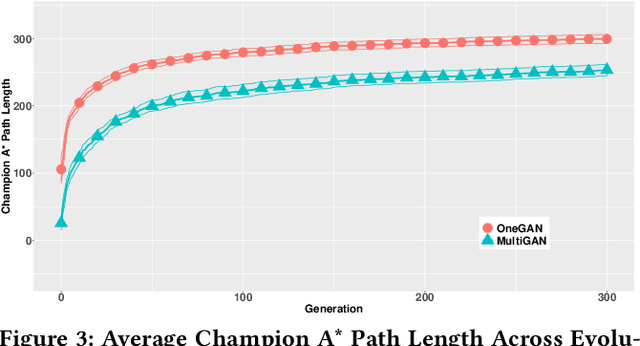Benjamin Capps
Hybrid Encoding For Generating Large Scale Game Level Patterns With Local Variations Using a GAN
May 27, 2021



Abstract:Generative Adversarial Networks (GANs) are a powerful indirect genotype-to-phenotype mapping for evolutionary search, but they have limitations. In particular, GAN output does not scale to arbitrary dimensions, and there is no obvious way to combine GAN outputs into a cohesive whole, which would be useful in many areas, such as video game level generation. Game levels often consist of several segments, sometimes repeated directly or with variation, organized into an engaging pattern. Such patterns can be produced with Compositional Pattern Producing Networks (CPPNs). Specifically, a CPPN can define latent vector GAN inputs as a function of geometry, which provides a way to organize level segments output by a GAN into a complete level. However, a collection of latent vectors can also be evolved directly, to produce more chaotic levels. Here, we propose a new hybrid approach that evolves CPPNs first, but allows the latent vectors to evolve later, and combines the benefits of both approaches. These approaches are evaluated in Super Mario Bros. and The Legend of Zelda. We previously demonstrated via divergent search (MAP-Elites) that CPPNs better cover the space of possible levels than directly evolved levels. Here, we show that the hybrid approach can cover areas that neither of the other methods can and achieves comparable or superior QD scores.
Using Multiple Generative Adversarial Networks to Build Better-Connected Levels for Mega Man
Jan 30, 2021



Abstract:Generative Adversarial Networks (GANs) can generate levels for a variety of games. This paper focuses on combining GAN-generated segments in a snaking pattern to create levels for Mega Man. Adjacent segments in such levels can be orthogonally adjacent in any direction, meaning that an otherwise fine segment might impose a barrier between its neighbor depending on what sorts of segments in the training set are being most closely emulated: horizontal, vertical, or corner segments. To pick appropriate segments, multiple GANs were trained on different types of segments to ensure better flow between segments. Flow was further improved by evolving the latent vectors for the segments being joined in the level to maximize the length of the level's solution path. Using multiple GANs to represent different types of segments results in significantly longer solution paths than using one GAN for all segment types, and a human subject study verifies that these levels are more fun and have more human-like design than levels produced by one GAN.
 Add to Chrome
Add to Chrome Add to Firefox
Add to Firefox Add to Edge
Add to Edge